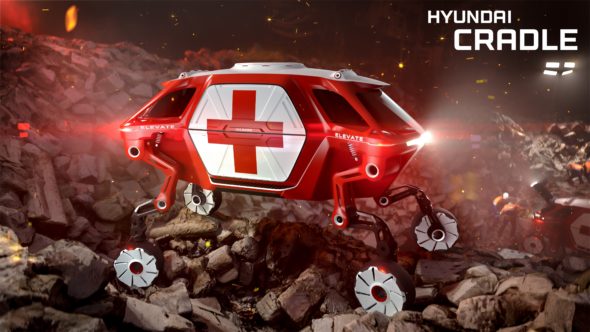 The Consumer Electronics Show (CES) kicks off again — and automakers show they’re thinking about more than self-driving cars.
The Consumer Electronics Show (CES) kicks off again — and automakers show they’re thinking about more than self-driving cars.
Over the past few years, the Consumer Electronics Show in Las Vegas has become a platform for automakers to showcase their latest innovations, which used to be reserved for auto shows. One of the most common innovations on display at CES has been self-driving technology. This year was no exception; Toyota made headlines this year with its autonomous technology. But unlike other companies, Toyota wants to keep the focus on humans driving. Its “Guardian” driver-assist system, based on fighter jets, works in the background, ready to take over to keep the driver safe.
Interconnected vehicles
This year also shows companies focusing on more than just self-driving cars. Amazon’s Alexa will now be baked in to the navigation systems of future cars. Drivers would likely consider this an upgrade, as the only way to get help from the voice assistant at present is to connect it to a navigation app on one’s phone. For shoppers who already own an Echo at home, having Alexa in the car seems like a natural next step. For Alexa to make an impact for drivers, it will have to function much like Google Maps, providing real-time directions and traffic conditions.
Ford and Audi are working with Qualcomm to showcase cellular vehicle-to-everything (C-V2X) technology. Audi previously made headlines with this technology, which will be available in the new e-tron, allowing drivers to pay tolls automatically. Other uses for C-V2X include the ability for cars to “talk” to one another, along with traffic lights, buildings, and pedestrians, to avoid collisions at intersections, among other things. (The “c” in C-V2x is what will identify pedestrians, since our phones can emit a small signal.) Ford plans to have this tech in all cars by 2022, according to a post by Don Butler, executive director of Ford’s Connected Vehicle Platform and Product.
Augmented reality and virtual reality
Audi, which has had a partnership with Disney’s Marvel since 2008, has created a virtual-reality experience for backseat passengers. By wearing VR goggles, passengers are dropped into the Guardians of the the Galaxy universe to guide a spaceship through different obstacles. But this is more than just a decidedly cool video game. The virtual spaceship moves in sync with the car. When the car speeds up, so does the spaceship; when the Audi takes a right turn, the ship does the same. By creating a VR experience that moves with the car, Audi may have tackled one of the biggest challenges of VR: motion sickness.
BMW also made headlines in relation to virtual reality, thanks to its partnership with North Face, with its FutureLight Camper. Instead of traditional (metal) body panels, the Camper features a lightweight, waterproof fabric shell.
Rethinking mobility
For many publications, Hyundai takes the cake for the most ambitious concept vehicle of CES with its concept called Elevate. Hyundai calls it the “ultimate mobility vehicle” (UMV), and it can climb over debris and across different terrains, making it ideal for first responders in the wake of a hurricane or earthquake. If we ever see a production-ready version of this vehicle, it may take some time for us to get used to its insect-like legs and its ability to grow taller like the robots of “War of the Worlds.”
Want more car news? Check out these articles:
- CarGurus’ Top LA Auto Cars for Every Lifestyle
- Driving the New CX-5 Proves Mazda Can Compete as a Premium Brand
- CarGurus Investigates the Disappearance of the Affordable Truck
from The CarGurus Blog http://bit.ly/2TKnnhw
Comments
Post a Comment